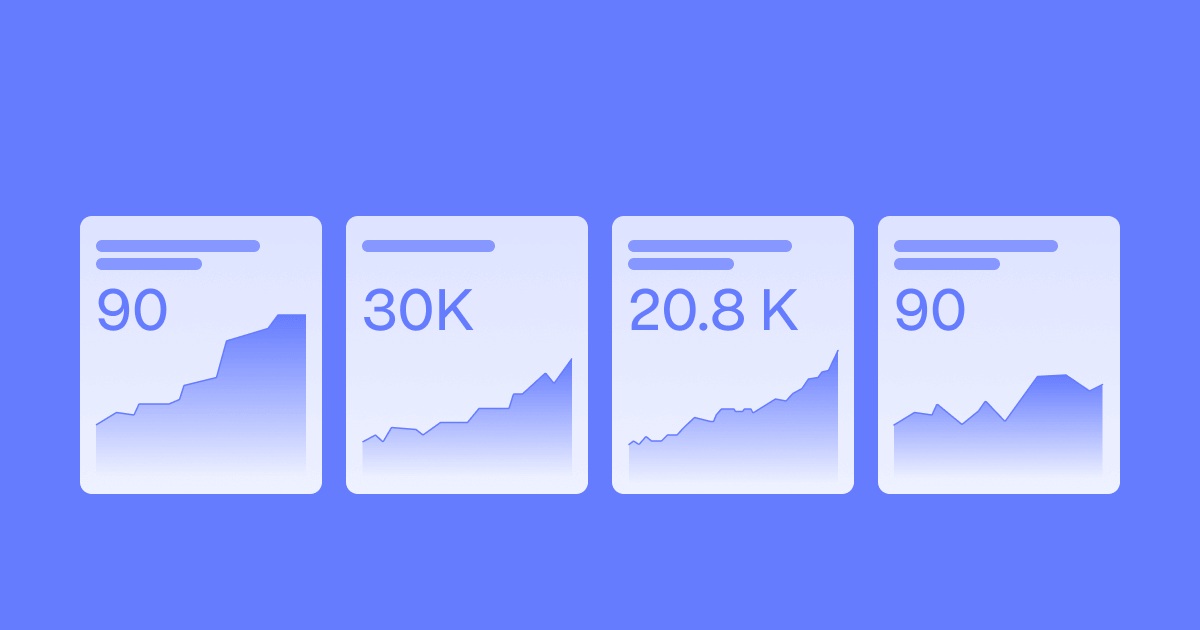Traditionally, a broad marketing approach dominated, reaching large audiences with generic messages. However, this strategy proves less effective since consumers face daily information overload. Because of that, they are becoming less responsive to one-size-fits-all communication.
This is where personalization comes in. It cuts through the noise, using data to create messages that resonate with each customer. Yet, a significant question remains: How can businesses effectively collect consumer insights? This is where Customer Relationship Management (CRM) systems take center stage.
This article will show how you can harness CRM to enhance personalized marketing. Also, we will outline practical steps for integrating these systems into Webflow. Finally, we will summarize the advantages and discuss overcoming common challenges.
But what exactly is personalized marketing? Let’s explore this concept further.
What is personalized marketing?
A personalized marketing strategy involves using clients’ data to optimize their experiences. By collecting information on user behavior, businesses can see patterns to target clients better. Such an approach helps marketing specialists identify their ideal audience and nurture leads.
Further emphasizing the importance of personalization, 63% of consumers think generic content is annoying. By giving recommendations and offers tailored to individual preferences, you can fix this problem. Personalized marketing examples may include product suggestions based on past purchases, targeted email campaigns, etc.
When done properly, you can expect such results:
- A more satisfying experience: Customers see product suggestions based on their interests, removing the need to browse extensively. What if a potential client shows interest in an item but abandons their cart? They will get a reminder that encourages them to make the purchase.
- Increased audience loyalty: People see the brand anticipates their wants and goes the extra mile to enhance their experience. This focus on relevance makes them feel valued and understood, increasing their loyalty.
- Better return on marketing investment (ROMI): Tailored ads are more cost-effective than traditional. Generic ads reach people who are not interested, limiting ROI.
However, getting these benefits of personalized marketing is challenging. Managing user data across different platforms quickly becomes messy. This data sprawl makes it hard to gain a unified audience view and adjust experiences properly.
Businesses using Webflow to build their websites might also face this issue. It is where CRM integration helps as a powerful solution. Let’s take a closer look at the advantages!
Benefits of CRM Integration for Personalized Marketing in Webflow
Connecting your customer data system to Webflow has a lot of great benefits. Here is how it can help:
Segmentation and Targeting
You can segment your audience with CRM data based on demographics, behavior, and purchase history. This way, you can produce highly relevant content for specific customer groups, boosting engagement.
Automated Workflows
Email campaigns can be automated based on users’ interactions. It goes like this: Customers visit your website. Their clicks and actions are tracked behind the scenes. Have they abandoned a cart? An email with a gentle reminder and discount appears in their inbox. Maybe they completed their phone purchase? Another email pops up, suggesting complementary phone cases they might have overlooked. This personalized approach keeps customers engaged and drives sales, all thanks to clever automation.
Deeper Customer Understanding
Consolidating user data in a CRM system provides insights into individual preferences. This information can make the content, product recommendations, and email campaigns more personalized.
Centralized User Data
CRM integration centralizes data from multiple sources into a single database. This way, you can avoid the challenge of managing fragmented information across various systems.
Data-Driven Marketing
With a CRM containing all your customer data, you can study what strategy works well and what doesn’t. You can look at things like purchases, campaign results, and how people use your site. Then, you can use those insights to better tailor your marketing to different users. For example, based on the obtained data, you can come up with targeted product bundles or improve website navigation.
CRM integration with Webflow helps you create truly personalized experiences. That said, let’s move on to explore how to actually do this.
How to Integrate CRM with Webflow
Unleashing the power of personalized marketing requires connecting your CRM system with Webflow. Here's a breakdown of the integration process:
There are two main approaches to integrating a CRM with Webflow:
- Native Integrations: Some CRM platforms offer built-in integration capabilities with Webflow through plugins or pre-made connectors. These are user-friendly and require minimal technical expertise.
- Custom Integrations: If native integration isn't available or doesn't meet your specific needs, consider custom development. This approach offers more flexibility. But, it requires a developer with expertise in both Webflow and your chosen CRM's API.
The specifics may vary depending on your chosen CRM and integration method. Still, the general steps typically involve:
- Identifying Your Goals: Define what you want to achieve with the integration. Understanding your desired outcomes will guide your choice of CRM and the functionalities you'll integrate.
- Choosing a CRM Solution: Research and select a CRM system like HubSpot, Zoho CRM, or Salesforce that integrates well with Webflow. It is also worth considering creating custom software on the CRM platform (with the help of HubSpot or Salesforce development companies, for instance).
- Connecting the Platforms: Follow the instructions provided by your chosen method (native integration plugin or custom API connection).
- Mapping Data Fields: Define how data will flow between platforms. This step involves mapping specific data fields in Webflow (e.g., contact forms) to corresponding fields in your CRM.
- Testing and Optimization: Thoroughly test the integration to ensure data flows smoothly and triggers workflows correctly. Make adjustments and optimize the setup as needed.
By following these steps, you can successfully integrate your CRM with Webflow and improve your marketing efforts. Now, it’s high time to go over some examples of how this connection can yield results.
Personalized Marketing with Webflow: How to Leverage CRM Data
Let's see how businesses across different industries may use CRM data for personalized marketing campaigns in Webflow:
E-commerce
An online clothing retailer uses purchase history data from their CRM. They customize product recommendations on their Webflow website. When a client visits a product page, they see suggested complementary items. These are based on their past purchases. For example, someone who bought a dress might see recommended shoes or handbags.
Benefits: Increased conversion rates, higher average order value, and a more engaging shopping experience.
Travel & Hospitality
A hotel chain integrates its CRM with its Webflow booking platform. They personalize website content based on past guest behavior. Returning guests might see special offers or loyalty program highlights. First-time visitors could see targeted promotions based on their browsing history. For example, highlighting family-friendly amenities for those searching for family vacations.
Benefits: Improved customer loyalty, targeted promotions leading to higher bookings, and a more relevant online guest experience.
SaaS (Software as a Service)
A marketing automation software company uses in-app behavior data from its CRM. They personalize the content on their Webflow landing page. Visitors who used specific features in their free trial might see content highlighting relevant premium features. This customized approach encourages them to upgrade.
Benefits: Increased engagement, higher conversion rates for paid plans, and a more effective lead nurturing strategy.
By strategically using CRM data through Webflow, you can create personalized marketing campaigns. These foster deeper customer relationships and drive engagement.
Conclusion
In today's competitive market, personalized marketing is a must-have. Integrating your customer database system with Webflow gives you a powerful tool for creating targeted experiences. You can segment audiences and send tailored messages that drive higher engagement and sales. Automated customized email journeys nurture leads based on their behavior. This way, you can build stronger relationships through fulfilling interactions. Plus, consolidated user data encourages smart, strategic marketing decisions.
While integrating systems may seem challenging, many user-friendly solutions exist to simplify the process. Explore options like HubSpot, Zoho CRM, or Salesforce, which offer straightforward Webflow integrations and guides.
.svg)
.svg)







.png)
.png)

.png)







-min.png)







..svg)
..svg)
..png)
.svg)
..png)
